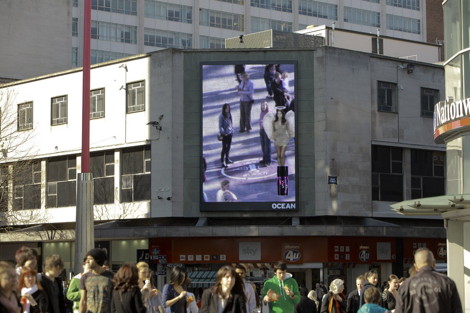Three Basic Tenants of Good Outdoor Digital Signage
Posted by: Richard Williams | Posted on: | 0 Comments
With the falling cost of digital signage hardware such as LCD screens, media players and outdoor enclosures, outdoor digital signage is becoming an increasingly easier for businesses and institutions to implement.
Poor outdoor digital signage installations, however, can prove costly. A damaged screen or failed systems could lead to costly repairs or replacement, and as outdoor digital signage has to survive in less than optimal conditions, this can become a common problem.
While it’s obvious that outdoor screens need defending from the rain, far more needs to go into their protection than just waterproofing. Here are some basic tenants that all good outdoor digital signage requires:
Total weatherisation
While waterproofing is essential for any outdoor display, other aspects to the weather are equally important to protect against. Temperature, for instance, is equally as disabling as rainfall. Most screens have a limited operating range. Overheating needs protecting against, especially in the summer, but preventing overheating is complicated by the need to keep rain and weather elements out, which makes it difficult to expel hot air.
The cold too can disable an outdoor screen, especially if temperatures drop below zero. In these circumstances, heaters, insulation or other systems need deploying to maintain a minimum temperature.
Impact Resistance
Any outdoor screen also needs protecting from impacts, whether accidental or deliberate. Typically, and LCD screen is highly vulnerable to shocks, and as many outdoor screens are left in unsupervised locations, they can fall foul of vandalism. Shatterproof screens are a necessity as is a rugged housing or enclosure. Thought should also go into preventing tampering with any cables or input sockets.
High Brightness
Another essential aspect of a good outdoor digital sign is a bright enough screen. Sunlight can make an outdoor screen virtually unreadable if it isn’t bright enough. Standard screens have a candela rating (unit of brightness) of around 400, candela rating of at least 12-1500 is required for any screen functioning outdoors.
Preventing glare may also be important for an outdoor screen as direct sunlight can cause reflections, which may make the screen unreadable during certain times of the day. Anti-reflective, shatterproof screens provide an ideal solution for any screen facing direct sunlight.
Post shortlink:
Popular Products
LCD Enclosure
Need armor for your LCD/LED screen(s)? Outdoors or inside the versatile LCD enclosure protects against thieves, vandals & the weather. Installation idea: NFL stadiums.
Outdoor Digital Signage
Exclusive 46” outdoor screen protection. Dubbed the ‘Totem’, due to its distinct design, it repels damage threats, but attracts audiences. Installation idea: Drive-thru restaurants.
Portrait Flat Panel Enclosure
Safeguard your eye-level advertising display screen(s), indoors or outdoors. Completely customizable, add exciting features like touch screen technology. Installation idea: Restaurant frontages.
Indoor Digital Signage
Popular purchase for retail outlets! Great for ‘point of sale’ persuasion, boost your brand with static & motion advertising from a single unit! Installation idea: Mall of America.





